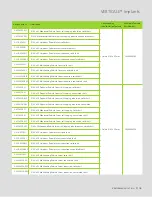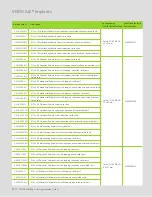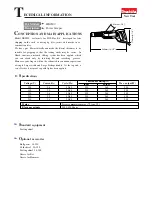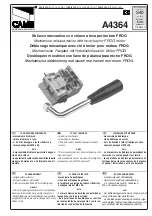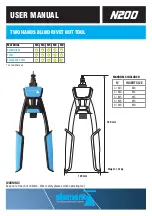
VERTICALE
NAVIGATION
7
Instrumentation / Surgical Steps
General Notes on use of Navigation instruments
The following section describes only the specific steps for the use of VERTICALE® Navigation instruments� For the general
instrumentation steps of the VERTICALE system for an open appraoch, we ask you to study the instrumentation guide for the
VERTICALE® OPEN Screw Rod system�
Please review the following notes prior to using VERTICALE® Navigation instruments�
•
Prior to navigation, always confirm that accuracy of the instrument tip or tip of screw driver with rigidly connected
screw is in an acceptable range for the intended use by positioning the navigated tip on an identifiable anatomical
landmark and comparing the actual tip location to that displayed by the system�
•
Assess navigational accuracy repeatedly throughout a procedure�
•
After each change to the navigated instrumentation assembly in use (e�g� for each new screw; after
re-attachment of tracker including array and spherical markers) when using a surgical navigation system, the
navigated instrumentation assembly must be re-verified for accuracy�
•
Discontinue use if inaccuracy is suspected�
•
If the stereotactic navigation system does not appear to be accurate or registration of Silony instruments fails
despite troubleshooting (e�g� resetting the system), do not rely on the navigation system� A non-navigated
technique using fluoroscopy and respective Silony Medical instrumentation should be used as per Silony Medical
Instrumentation guides�
•
If the desired virtual screw or instrument diameter is not available in the software, use the next larger available
size in diameter (e�g� Ø 5�2 mm screws
Software: select Ø 5�5 mm screw projection)�
•
At all times during use, ensure the navigation tracker is visible to the camera of the respective navigation system
in use�
• For probes, taps and the screw driver, the navigation tracker will rotate around the instrument shaft� Please
hold the tracker with the hand for permanent camera visibility of the array markers while using the
instrument�
• For inserting taps and screws rotate proximal instrument handle clockwise, for removal rotate
anti-clockwise�
• Some instruments are equipped with an anti-rotation pin� For these instruments, the navigation tracker will
not rotate around the instrument shaft during use (only back and forth rotation allowed for permanent
camera visibility)�
•
Care should be taken to avoid bending forces on registered instruments during navigation procedure as deflection
can influence navigation accuracy�
•
If instruments drop or may otherwise be damaged, re-verify them with respect to anatomical landmarks or use
another instrument� Do not use any instrument if verification of anatomical landmarks fails� Omission to
do so may lead to serious injury to the patient�
•
Do not use the tracker and/or Silony Navigation instruments if any components appear to be loose, bent or
otherwise damaged�
•
Cannulated instruments (taps, screw driver) are available for using guide wires
• The guide wires are not navigated instruments�
• Ensure that the length of the guide wire exceeds the length of implant, instrument and additional handle�
• Push the instrument over the placed guide wire
• Ensure the guide wire remains securely in position throughout the entire duration of the procedure�
• Remove the guide wire after screw insertion and confirming final screw position�

















